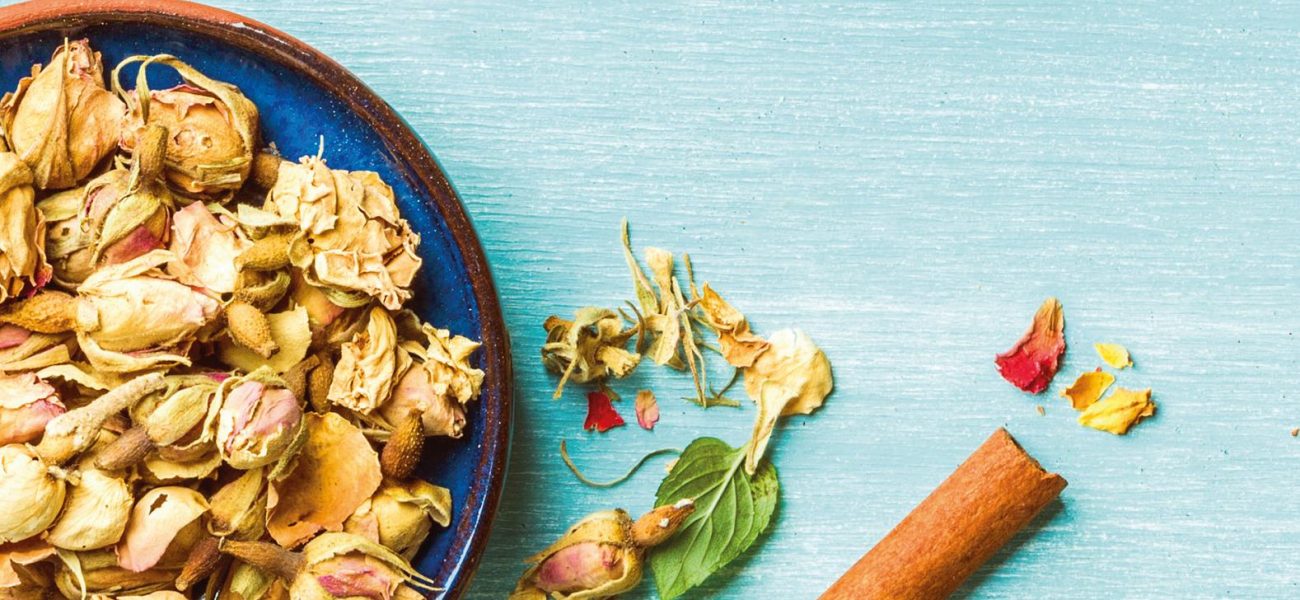It’s safe to say, that as a nation, we’re fixated with our skin. The beauty and cosmetics industry took home £2.6 billion in 2018 (beautyserve.com), but creating a glowing complexion doesn’t solely depend on the diligence of your skincare routine, or the amount of money you spend on beauty products. In fact, as nutritionist Henrietta Norton (wildnutrition.com), and naturopath Katie Ruane (harleystreetnaturopath.co.uk) explain, integrating skin-friendly foods into our diet can be just, if not more, beneficial than following a rigid skincare routine. To find out more, we asked them how we can tweak our diets to get our best skin.
Gut feeling
Ever wondered if your digestive problems could be to blame for patches of dry skin? Well, you’re probably right, as these two parts of your body are closely linked. “Our gut and our skin are more interconnected than you might think,” explains Katie. “Having a ‘leaky gut’ means the cells walls in the digestive system allow molecules into the body that shouldn’t be there. These molecules cause internal inflammation and stress, which can have a huge impact on the skin. Conditions like eczema and psoriasis are normally telling you that you’re eating something that your body doesn’t like, while acne is often linked to hormonal imbalance and an overloaded liver, and what you eat can have a huge impact on your skin and complexion.”
Sugar rush
Everyone knows that overindulging in chocolate and cocktails over the Christmas period can leave your complexion looking less glowy come the New Year. Stimulants like sugar and alcohol aren’t great for our skin, as Katie explains: “The blood vessels in our body not only react to the temperature of our environment and stress levels, but also to what we eat and drink. Caffeine and sugar, for example, create a stress response in the body, which gets your heart pumping faster and can make you look flushed in the face. Eating foods that are highly processed with sugar can also feed the ‘bad’ bacteria in the gut, which can aggravate skin conditions.”
Add in antioxidants
As much as we all love the familiar beige-hue of a cheeseboard, having a rainbow of colours on your plate is better for your gut and your skin. “Avoiding oxidation damage is important to keep it elastic,” explains Henrietta. “Oxidation results in ‘cross-linking’ of proteins that toughens up the skin, making it leathery and leaving it prone to wrinkles. But luckily, antioxidants can reduce this. These antioxidants are found in abundance in the skin and colour of vegetables and fruit, so building in a rainbow of colour into each meal is the simplest and most nourishing way to support oxidation. Selenium is a powerful antioxidant trace mineral that’s responsible for maintaining elasticity and skin firmness.” An easy, skin-friendly snack that you can keep in your handbag is Brazil nuts. “These are rich in selenium,” says Henrietta. “Eating just three or four per day provides adequate selenium intake for most people. Other rich sources of vitamin E include wheat germ oil, sunflower seeds, almonds, spinach, peaches, prunes, tomatoes, cabbage and asparagus.”
Think about zinc
Period breakouts plague a lot of us, but the good news is that what we eat can help to mitigate the effects. “The mineral zinc is an important component of healthy skin and may help prevent acne,” says Henrietta. “It acts by regulating the production of oil in the skin, and may help control some of the hormones that create acne. One study found that zinc therapy can kill bacteria. Other foods sources high in zinc include oysters, pecans, Brazil nuts, eggs, oats, poultry, pumpkin seeds, ginger, legumes, seafood, mushrooms and wholegrains.” If you struggle with inflammation or dry skin, then it could be worth adding more vitamin A foods into your diet. “A deficiency in vitamin A may lead to dry skin, especially those associated with auto-immune conditions such as psoriasis or rosacea,” says Henrietta. “Building in foods rich in beta-carotene, such as squashes and carrots, can improve your body’s storage of this useful nutrient.”
Lock in the glow
To achieve a glowy complexion, eating enough fatty acids is essential. “Fatty acids, such as those found in mackerel, nourish the top layer of the skin and keep water ‘locked in’,” explains Henrietta. “However, simply increasing your intake of oily fish or flaxseed oil may not be enough – a deficiency in magnesium can affect how well we use these oils. Therefore, eating a diet rich in green leafy vegetables or supplementing with a natural form of magnesium can really help to support healthy skin. Green leafy vegetables, such as chard or cavolo nero, are also rich in vitamin C and magnesium, two important nutrients for forming collagen, the metabolism of omega 3 and the production of hyaluronic acid – the skin’s ‘trampoline’, which gives it a hydrated, plump look and feel.




















